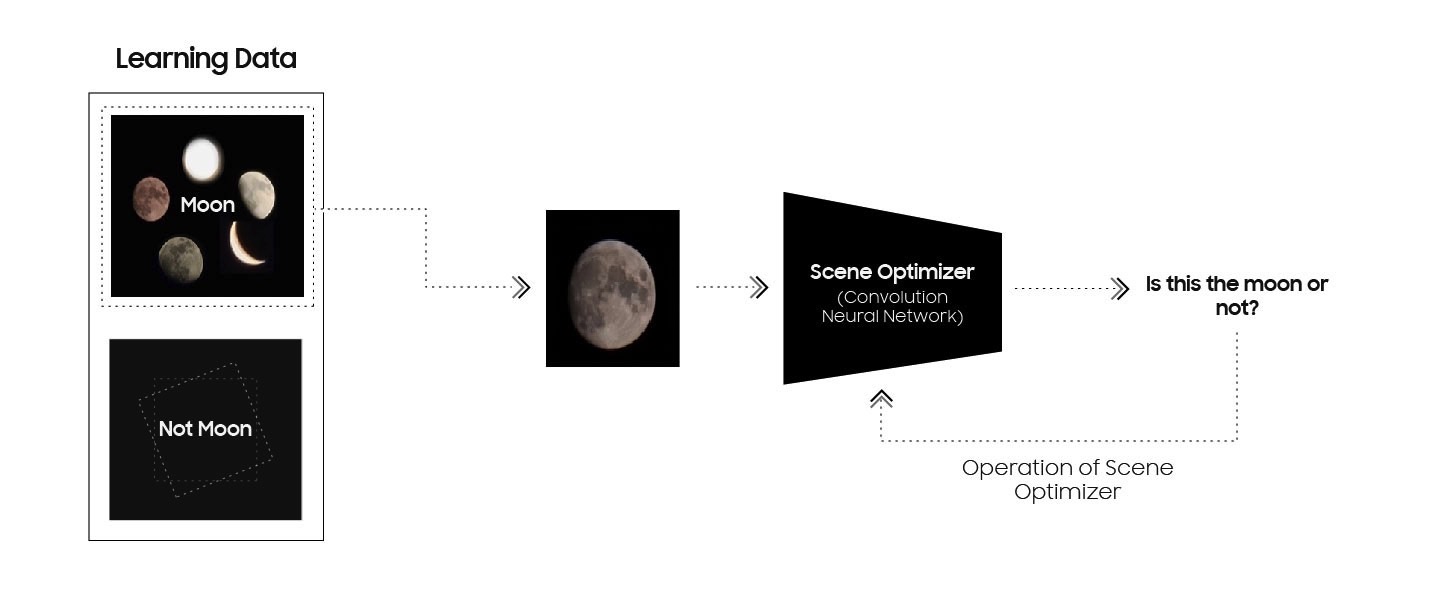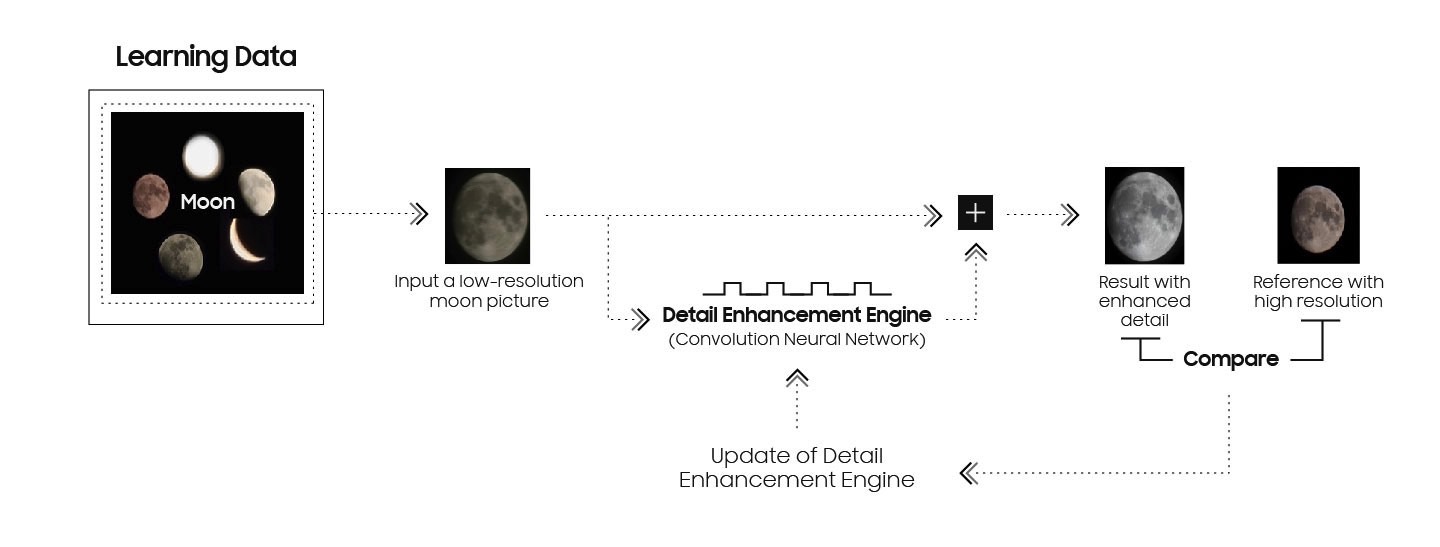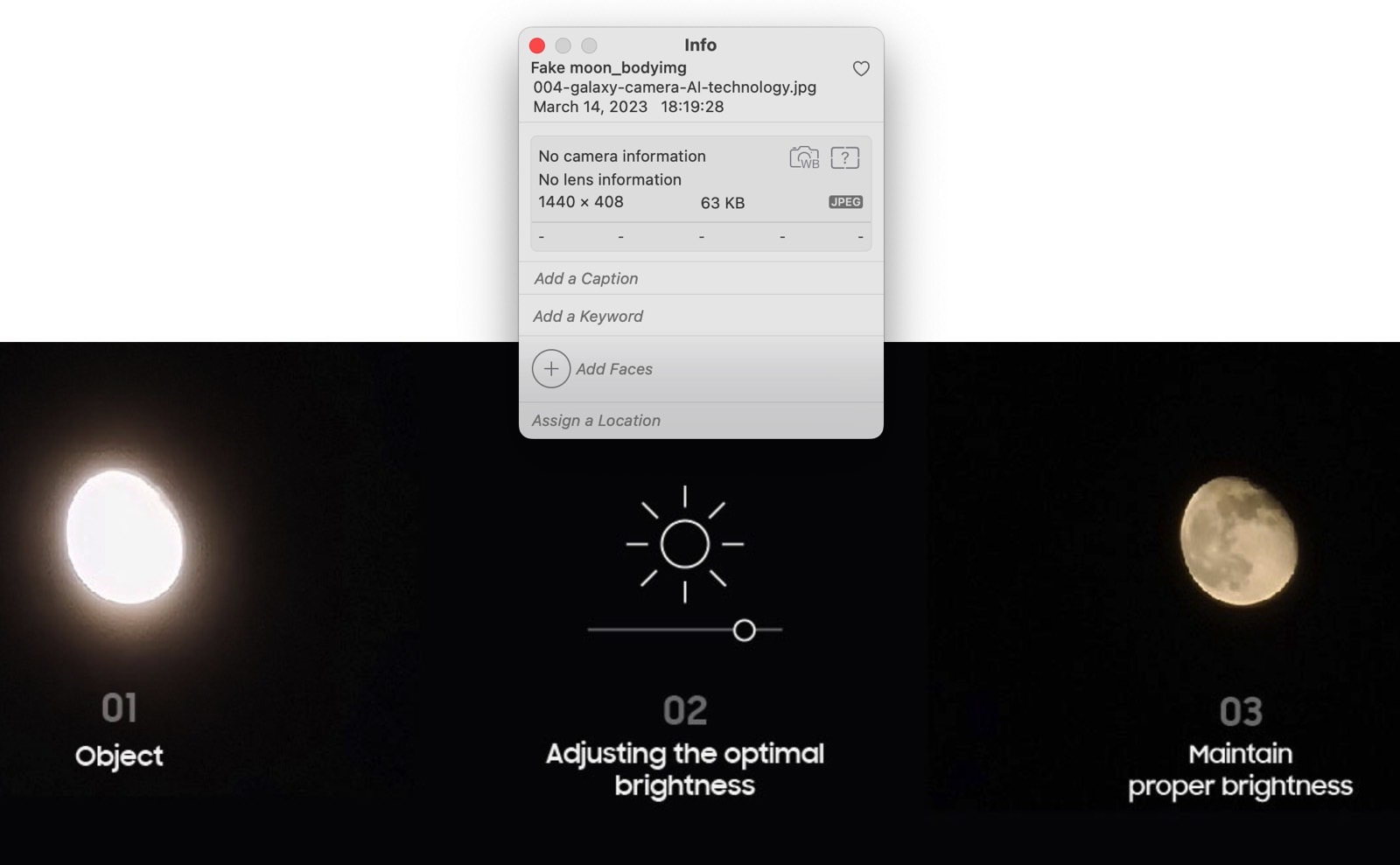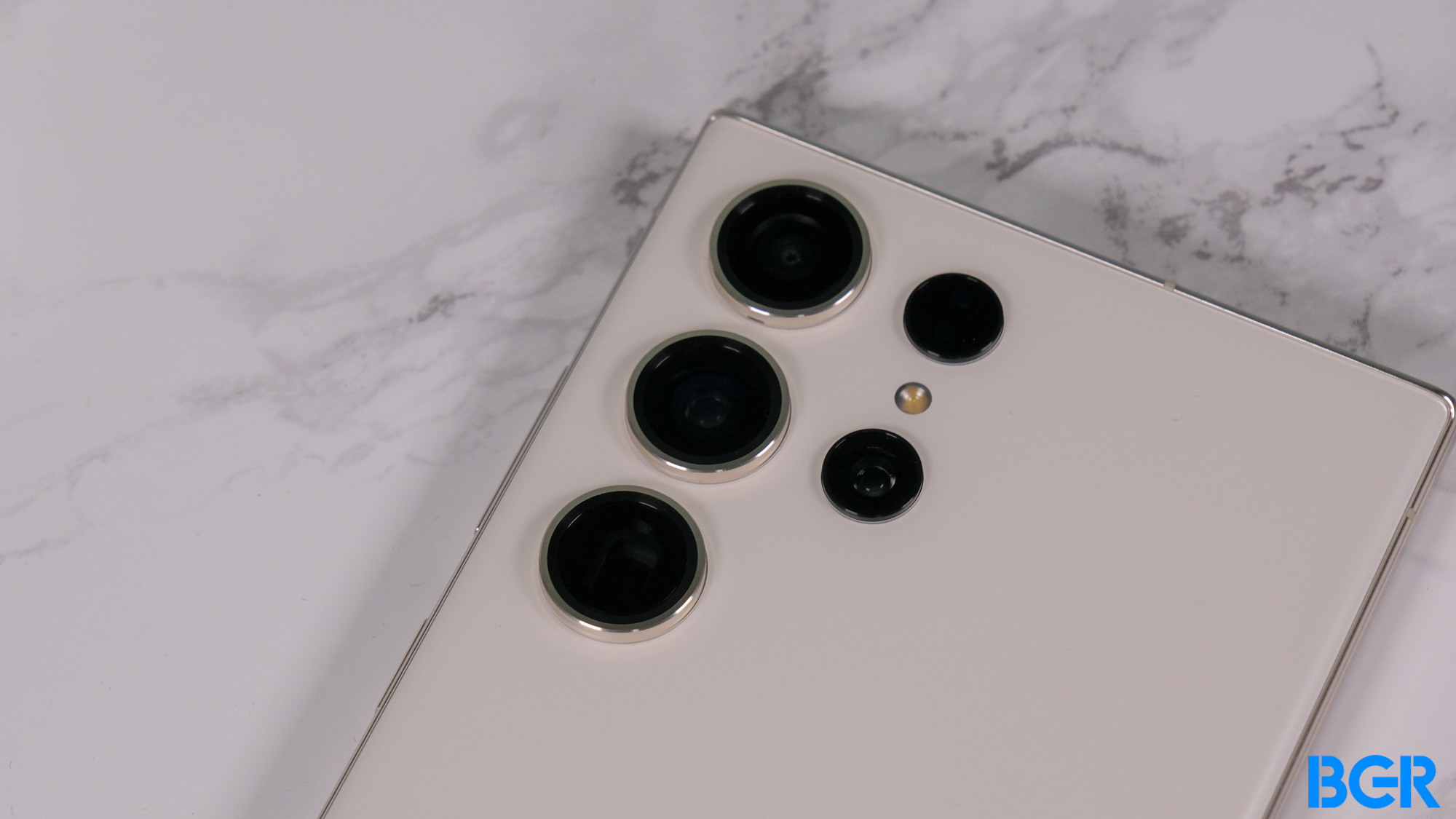Samsung attempts to explain its fake Moon photos
A Redditor went viral over the weekend by proving that phones like the Galaxy S23 Ultra will produce fake Moon photos with a few simple experiments. This wasn’t the first time someone showed that Samsung might be misleading Galaxy S buyers. But the post’s virality brought the matter back to everyone’s attention. It took Samsung a few days to address the fake moon photos controversy. The company translated a post published in Korea last year to English which explains its algorithms for moon photos. Samsung also essentially says that it’ll keep lying to you.
The main problem here isn’t that Samsung is faking moon photos with the help of artificial intelligence (AI). It’s that Samsung is misleading buyers and using “nightography” and moon photos as big selling points for the phone. Check out the Galaxy S23 Ultra ad below:
Remember, Samsung did something similar back in 2016 when it turned on Beauty Mode by default on Samsung phones. The beautification feature removed face imperfections by default, and users hated it.
Samsung’s moon photos controversy response is available at this link. The English version is almost similar to the Korean variant, available at this link.
Samsung explains how its high-end phones use a Screen Optimizer feature to improve the resulting image. Specifically, the feature allows AI to enhance photos of the moon.
Samsung says that users can disable Screen Optimizer if they want to. The feature launched with the Galaxy S21 series:
When you’re taking a photo of the moon, your Galaxy device’s1 camera system will harness this deep learning-based AI technology, as well as multi-frame processing in order to further enhance details.

Samsung uses a technology called Super Resolution to take more than 10 images of the moon at 25x zoom or higher. This process should eliminate noise and enhance clarity, Samsung says.
Super Resolution technology helps produce images through multi-frame composition. When Scene Optimizer is turned on and the moon has been recognized as an object, the camera will deliver users a bright and clear image through the detail enhancement engine of Scene Optimizer on top of the Super Resolution technology.

Furthermore, Samsung explains that it trained its machine learning (ML) algorithms on various moon shapes, so it can recognize all shapes of the moon. But the AI will not recognize the moon if objects block it, something we saw in recent experiments.
Once it recognizes the moon, the Galaxy S phone will adjust the brightness “to present the moon more clearly while maintaining optimal brightness.”
If the moon is at an appropriate brightness level and the user takes the photo, the algorithms will deliver the clearest image of the moon possible:
First, Scene Optimizer reconfirms whether to apply the detail enhancement engine through AI processing.
Next, the camera takes multiple pictures and then synthesizes them into a single, bright image with reduced noise.
After Multi-frame Processing has taken place, Galaxy camera further harnesses Scene Optimizer’s deep-learning-based AI detail enhancement engine to effectively eliminate remaining noise and enhance the image details even further.
The final part seems responsible for the fake moon photos we saw in the Reddit experiment. Here’s a diagram of the process:

Samsung ends the blog post with a promise to improve Scene Optimizer and essentially tell users that it’ll continue to deliver fake photos of the moon. But maybe make it harder for people to detect it:
Samsung continues to improve Scene Optimizer to reduce any potential confusion that may occur between the act of taking a picture of the real moon and an image of the moon.
The better way to handle the matter would be for Samsung to turn on Scene Optimizer off by default and properly inform customers that the moon photos they take might not be real. Also, not using moon photography in ads until the Galaxy S phone can actually capture real photos of the moon would be great.

Samsung is aware of how important the fake moon controversy might be. Why else use “fake moon” as a title for all the photos uploaded to the blog post?
For all the latest Technology News Click Here
For the latest news and updates, follow us on Google News.

